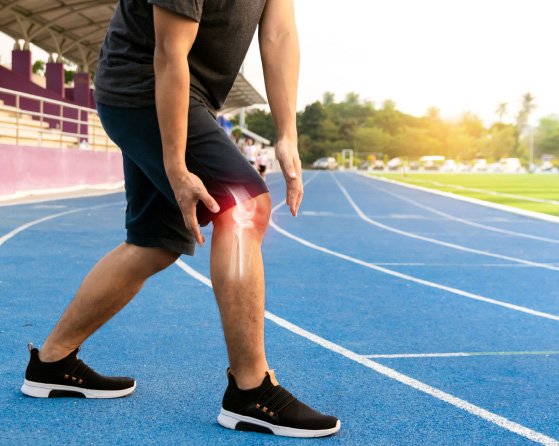Introduction
Sports injuries are a common occurrence among athletes of all levels. From sprains and strains to chronic joint pain, these injuries can significantly hinder performance and sideline athletes for extended periods. While there are various treatment options available, prolotherapy has emerged as a promising natural solution for sports-related injuries. In this blog post, we will explore the concept of prolotherapy, its effectiveness in treating sports injuries, and its growing popularity in the athletic community.
Understanding Prolotherapy
Definition: Formalized by Dr. George Hackett in the 1950s, Prolotherapy, also known as regenerative injection therapy, is a non-surgical treatment that involves injecting a solution into damaged ligaments, tendons, or joints to stimulate the body’s natural healing response. (1,2)
Mechanism of Action: The injected solution, typically a combination of dextrose (sugar water) and a local anesthetic, triggers a localized inflammatory response. This inflammatory process initiates the production of collagen(3) which helps strengthen and repair damaged tissues.
Safety and Natural Approach: Prolotherapy is a safe procedure with minimal side effects, as it utilizes the body’s own healing mechanisms. Unlike surgical interventions or long-term use of pain medications, prolotherapy addresses the root cause of the injury without relying on synthetic substances.
Effectiveness of Prolotherapy in Sports Injuries
Treating Ligament and Tendon Injuries:
Ligament and tendon injuries, such as sprains and strains, are common in sports. Prolotherapy can help strengthen and stabilize these injured structures by promoting collagen growth, leading to improved joint stability and reduced pain.
Some common examples include Partial Meniscus Tears, Sprains of Collateral and Anterior cruciate ligaments of the knee, Partial Tears, Tendonitis and Tendinosis of the
Rotator Cuff Muscles.Overuse Injuries and Chronic Pain(4): Athletes often experience chronic pain due to overuse injuries. Prolotherapy can alleviate chronic pain by stimulating tissue regeneration and reducing inflammation. It offers an alternative to long-term use of pain medications, providing athletes with a more sustainable solution.
Examples include chronic low back pain,(5,6) refractory lateral epicondylosis,(70painful overuse tendinopathy,,(4)and refractory tendinopathies like the Achilles amongst runners.
Joint Instability: Joint instability is a prevalent concern for athletes, particularly in contact sports. Prolotherapy injections can strengthen the connective tissues around the joints, enhancing stability and reducing the risk of recurring injuries.
Faster Recovery: Prolotherapy accelerates the healing process, allowing athletes to recover more quickly and return to their training and competitive activities.
Rising Popularity of Prolotherapy in Sports Medicine
Athletes Embracing Prolotherapy: Many professional athletes and sports teams have started incorporating prolotherapy into their treatment protocols. Its effectiveness, natural approach, and ability to expedite recovery make it an attractive option for athletes.
Avoiding Surgical Interventions: Prolotherapy offers a non-surgical alternative for sports injuries. By opting for prolotherapy, athletes can potentially avoid invasive procedures, lengthy rehabilitation periods, and the associated risks of surgery.
Complementary Therapy: Prolotherapy can be used in conjunction with other therapies such as physical therapy, chiropractic care, and exercise rehabilitation programs. This holistic approach maximizes the benefits and enhances overall recovery.
Accessibility and Affordability: Prolotherapy is increasingly becoming accessible to athletes of all levels, thanks to the growing number of practitioners and clinics offering this treatment. Additionally, compared to surgical interventions, prolotherapy is generally more affordable.
Conclusion
Prolotherapy has gained recognition as an effective and natural solution for treating sports injuries. Its ability to stimulate tissue regeneration, promote healing, and expedite recovery makes it a viable option for athletes looking to overcome injuries and enhance their performance. As the popularity of prolotherapy continues to rise within the sports medicine community, it is essential for athletes and sports enthusiasts to consider this innovative treatment when seeking comprehensive and sustainable injury recovery options.
References
- Nair LS. Prolotherapy for tissue repair. Transl Res. 2011;158(3):129–31. [PubMed] [Google Scholar]
- Hackett GS, Hemwall GA, Montgomery GA. Ligament and Tendon Relaxation Treated by Prolotherapy.5th ed. Oak Park, IL: Gustav A. Hemwall; 1993. [Google Scholar]
- Hung CY, Hsiao MY, Chang KV, Han DS, Wang TG. Comparative effectiveness of dextrose prolotherapy versus control injections and exercise in the management of osteoarthritis pain: a systematic review and meta-analysis. J Pain Res. 2016;9:847–57. [PMC free article] [PubMed] [Google Scholar]
- Rabago D, Best TM, Beamsley M, Patterson J. A systematic review of prolotherapy for chronic musculoskeletal pain. Clin J Sport Med. 2005;15(5):376–80. [PubMed] [Google Scholar]
- Yelland MJ, Del Mar C, Pirozzo S, Schoene ML. Prolotherapy injections for chronic low back pain: a systematic review. Spine (Phila Pa 1976) 2004;29(19):2126–33. [PubMed] [Google Scholar]
- Dagenais S, Yelland MJ, Del Mar C, Schoene ML. Prolotherapy injections for chronic low-back pain. Cochrane Database Syst Rev. 2007 Apr 18;2:CD004059. [PMC free article] [PubMed] [Google Scholar]
- Best TM, Rabago D, Zgierska AE, Zeisig E, Ryan M, Crane D. A systematic review of four injection therapies for lateral epicondylosis: prolotherapy, polidocanol, whole blood and platelet-rich plasma. Br J Sports Med. 2009;43(7):471–81. [PMC free article] [PubMed] [Google Scholar]



